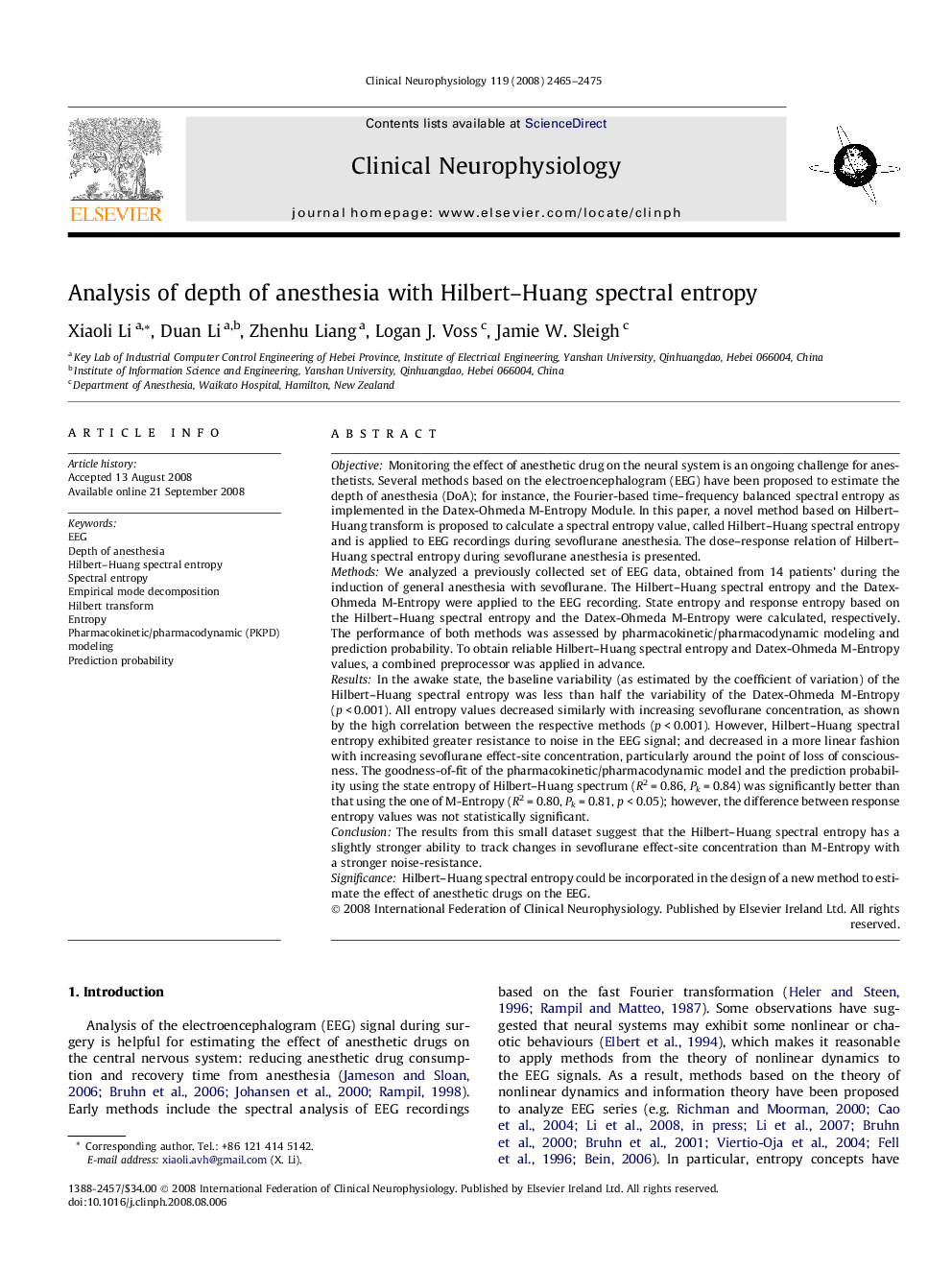| Article ID | Journal | Published Year | Pages | File Type |
|---|---|---|---|---|
| 3047006 | Clinical Neurophysiology | 2008 | 11 Pages |
ObjectiveMonitoring the effect of anesthetic drug on the neural system is an ongoing challenge for anesthetists. Several methods based on the electroencephalogram (EEG) have been proposed to estimate the depth of anesthesia (DoA); for instance, the Fourier-based time–frequency balanced spectral entropy as implemented in the Datex-Ohmeda M-Entropy Module. In this paper, a novel method based on Hilbert–Huang transform is proposed to calculate a spectral entropy value, called Hilbert–Huang spectral entropy and is applied to EEG recordings during sevoflurane anesthesia. The dose–response relation of Hilbert–Huang spectral entropy during sevoflurane anesthesia is presented.MethodsWe analyzed a previously collected set of EEG data, obtained from 14 patients’ during the induction of general anesthesia with sevoflurane. The Hilbert–Huang spectral entropy and the Datex-Ohmeda M-Entropy were applied to the EEG recording. State entropy and response entropy based on the Hilbert–Huang spectral entropy and the Datex-Ohmeda M-Entropy were calculated, respectively. The performance of both methods was assessed by pharmacokinetic/pharmacodynamic modeling and prediction probability. To obtain reliable Hilbert–Huang spectral entropy and Datex-Ohmeda M-Entropy values, a combined preprocessor was applied in advance.ResultsIn the awake state, the baseline variability (as estimated by the coefficient of variation) of the Hilbert–Huang spectral entropy was less than half the variability of the Datex-Ohmeda M-Entropy (p < 0.001). All entropy values decreased similarly with increasing sevoflurane concentration, as shown by the high correlation between the respective methods (p < 0.001). However, Hilbert–Huang spectral entropy exhibited greater resistance to noise in the EEG signal; and decreased in a more linear fashion with increasing sevoflurane effect-site concentration, particularly around the point of loss of consciousness. The goodness-of-fit of the pharmacokinetic/pharmacodynamic model and the prediction probability using the state entropy of Hilbert–Huang spectrum (R2 = 0.86, Pk = 0.84) was significantly better than that using the one of M-Entropy (R2 = 0.80, Pk = 0.81, p < 0.05); however, the difference between response entropy values was not statistically significant.ConclusionThe results from this small dataset suggest that the Hilbert–Huang spectral entropy has a slightly stronger ability to track changes in sevoflurane effect-site concentration than M-Entropy with a stronger noise-resistance.SignificanceHilbert–Huang spectral entropy could be incorporated in the design of a new method to estimate the effect of anesthetic drugs on the EEG.
